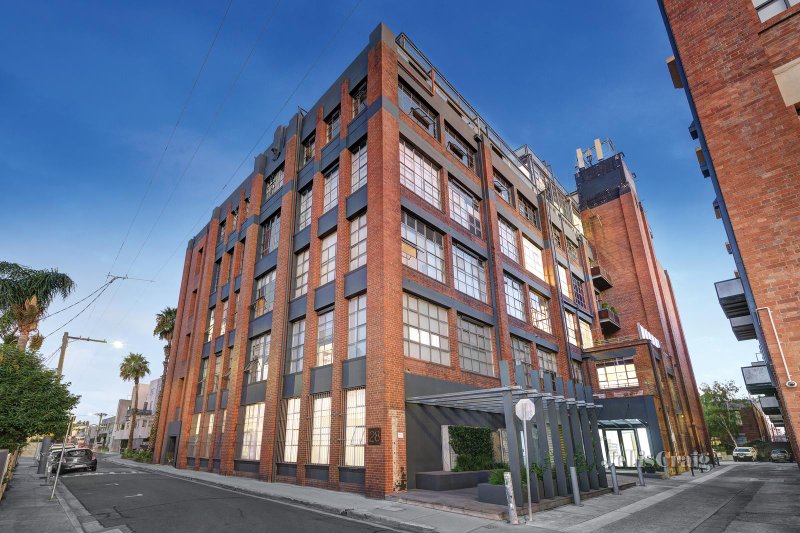February 2022
An historic industrial area in Richmond associated with Australia’s history as a major wool producer is threatened with more intense development that could undermine its heritage value if a proposed amendment to the City of Yarra’s planning regulations goes ahead.
The City of Yarra covers the inner suburban areas of Richmond, Collingwood, Fitzroy and the North Carlton, some of the oldest and most historical parts of Melbourne. It has within its boundaries some of Melbourne’s earliest and most important heritage areas. The way that it deals with development and growth within these areas is therefore of utmost importance.
The Yarra City Council is in the process of amending its planning regulations that govern the scale and form of new buildings that can be constructed in these suburbs. Known collectively as Amendment C269, these changes are being made to take account of more recent data on demographic changes and population projections, development trends, growth of commercial areas etc. The amendments include proposed changes to the Heritage Policy within these planning regulations.
The RHSV was pleased to find that the proposed amendments to the Heritage Policy contain many positive aspects that are an improvement over current policy. Amongst other things they say that new developments should respect Yarra’s distinctive features, including the low-rise character of its residential neighbourhoods and its historic retail strips (02.01 Municipal Planning Strategy: Strategic Directions)
Historic retail strips and the way in which the City of Yarra deals with them have however long been an issue of concern to the RHSV and to local resident groups. Yarra divides its retail shopping strips into what it calls ‘major activity centres’ and smaller neighbourhood and local centres. The ‘major activity centres’ in Yarra are the Swan Street, Bridge Road and Victoria Street shopping strips in Richmond, the Brunswick Street retail and hospitality area in Fitzroy, and the Smith Street shops on the border of Collingwood and Fitzroy. These are areas that host an evolving range of retail, entertainment, hospitality and commercial services. Increasing population and employment needs have created an increased demand for more retail and commercial floor space, and this means that these historic shopping strips need to accommodate new developments and modifications. Planning regulations need to ensure that these are appropriate and that the heritage character of these historic retail strips is maintained.
However in many cases the retention of the historic shops has been interpreted as meaning retention of the façade only, with as little as the front five metres of the original building retained. The rest can then be demolished and replaced by new buildings behind, which can be as high as six stories. Any building within a ‘major activity centre’ is subject to lower standards of heritage protection than those in other areas.

Extension of Swan Street Major Activity Centre. Image credit: realestate.com.au
Extension of Swan Street Major Activity Centre
Of concern to the RHSV is the potential extension of the Swan Street ‘major activity centre’ to include a nearby industrial complex of great heritage significance. The area between Tanner Street and the Richmond railway station contains an extraordinary collection of multi-storied former textile mills built in the early twentieth century. A good view of the complex can be obtained from a train entering or leaving Richmond station. These buildings have a significant history linked to Australia’s wool industry. The dominant name in the complex is that of the Australian Knitting Mills, which produced the uniforms worn by Australian soldiers in the First World War. Most of these factories have now been converted into apartments or offices, and all appear to be in good condition.
A proposed Amendment C269 to the City of Yarra’s planning regulations included an extension of the boundary of the Swan Street ‘major activity centre’ to include this area. The reason for doing so was not at all clear. The RHSV strongly opposed its inclusion for the following reasons:
- This area is a rare example of an extensive industrial complex of great heritage significance that should not be subject to the development pressures inherent in its inclusion in a ‘major activity centre’.
- The boundary extension is unnecessary as the complex already performs the function of a ‘major activity centre’ in that it is a high-density residential and commercial area.
- Attempting to introduce further intensive development will place the heritage values of the place at risk.
Fortunately the panel dealing with the Amendment did not support this area being included within the Swan Street major activity centre ‘at this stage’. What it did say is that: ‘The land should be included subject to further strategic work foreshadowed by Council and considered as part of a separate Planning Scheme amendment’. This at least keeps the door open for protection to be obtained in the future for this significant industrial heritage site.
To read the RHSV’s submission of December 2020 to the City of Yarra on its Planning Scheme Amendment C269 click here

 239 A'Beckett Street Melbourne, Victoria, 3000
239 A'Beckett Street Melbourne, Victoria, 3000  03 9326 9288
03 9326 9288  office@historyvictoria.org.au
office@historyvictoria.org.au  Office & Library: Weekdays 9am-5pm
Office & Library: Weekdays 9am-5pm

